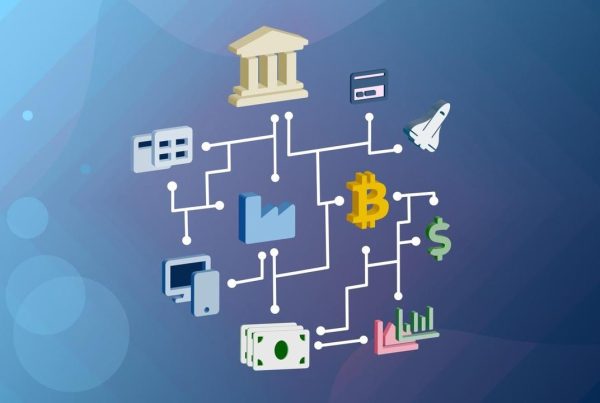Understanding Crypto Gas Fees
In the world of cryptocurrency, gas fees play a crucial role in the functioning of blockchain networks, particularly those that support smart contracts like Ethereum. These fees are essential for processing transactions and executing smart contracts, but they can often be a source of confusion for both new and experienced users. This article aims to demystify crypto gas fees, explaining what they are, how they work, and why they fluctuate.
What Are Gas Fees?
Gas fees are the costs associated with executing transactions or smart contracts on a blockchain. They are paid in the native cryptocurrency of the network. For instance, on the Ethereum network, gas fees are paid in Ether (ETH). These fees compensate miners or validators for the computational power and resources required to process and validate transactions.
How Gas Fees Work
Gas fees are determined by several factors, including:
- Network Demand: When more users are trying to execute transactions, the demand for processing power increases, leading to higher gas fees.
- Transaction Complexity: More complex transactions, such as those involving smart contracts, require more computational resources, resulting in higher fees.
- Gas Limit: Each transaction has a gas limit, which is the maximum amount of gas the sender is willing to pay. If the transaction exceeds this limit, it will fail.
- Gas Price: This is the amount a user is willing to pay per unit of gas. It is typically measured in Gwei, which is a denomination of Ether.
Understanding Gas Price and Gas Limit
The gas price is the amount of Ether a user is willing to pay for each unit of gas. It can fluctuate based on network congestion. The gas limit is the maximum amount of gas a user is willing to spend on a transaction. For example, if a user sets a gas price of 100 Gwei and a gas limit of 21,000, the total transaction fee would be:
Total Fee = Gas Price x Gas Limit
In this case, the total fee would be 0.0021 ETH (100 Gwei x 21,000 gas units).

Factors Influencing Gas Fees
Several factors can influence gas fees, including:
- Network Congestion: High demand for transactions can lead to increased gas prices.
- Time of Day: Gas prices can vary depending on the time of day, with peak hours often seeing higher fees.
- Market Trends: Significant market events or news can lead to spikes in transaction volume, affecting gas fees.
Real-World Implications of Gas Fees
Gas fees can have significant implications for users and developers alike. For instance, during periods of high demand, such as the DeFi boom in 2020, users experienced exorbitant gas fees, sometimes exceeding $100 for a single transaction. This situation led to discussions about scalability and the need for solutions to reduce fees.
Moreover, developers must consider gas fees when designing decentralized applications (dApps). High fees can deter users from interacting with a dApp, impacting its adoption and success.
Strategies to Manage Gas Fees
Users can employ several strategies to manage and minimize gas fees:
- Timing Transactions: Executing transactions during off-peak hours can result in lower gas prices.
- Setting Custom Gas Prices: Users can manually set gas prices to avoid overpaying during high-demand periods.
- Using Layer 2 Solutions: Solutions like Polygon and Optimism can help reduce gas fees by processing transactions off the main Ethereum chain.
Layer 2 Solutions and Their Impact on Gas Fees
Layer 2 solutions are designed to alleviate congestion on the main blockchain by processing transactions off-chain. These solutions can significantly reduce gas fees and improve transaction speeds. Some popular Layer 2 solutions include:
- Polygon: A multi-chain scaling solution that allows for faster and cheaper transactions.
- Optimism: A Layer 2 scaling solution that uses optimistic rollups to enhance Ethereum’s scalability.
- Arbitrum: Another Layer 2 solution that aims to reduce gas fees and increase transaction throughput.
By utilizing these solutions, users can enjoy lower fees while still benefiting from the security of the Ethereum network.
Future of Gas Fees in Cryptocurrency
The future of gas fees in the cryptocurrency space is likely to evolve as blockchain technology advances. Several developments could impact gas fees:
- Ethereum 2.0: The transition to Ethereum 2.0 aims to improve scalability and reduce gas fees through the implementation of proof-of-stake (PoS) consensus.
- Cross-Chain Solutions: As interoperability between different blockchains improves, users may have more options for executing transactions with lower fees.
- Increased Adoption of Layer 2 Solutions: As more users and developers adopt Layer 2 solutions, the overall demand on the main chain may decrease, leading to lower gas fees.
FAQs About Crypto Gas Fees
What is a gas fee in cryptocurrency?
A gas fee is the cost required to execute a transaction or smart contract on a blockchain network. It compensates miners or validators for their work in processing and validating transactions.
How are gas fees calculated?
Gas fees are calculated based on the gas price (the amount a user is willing to pay per unit of gas) and the gas limit (the maximum amount of gas a user is willing to spend on a transaction).
Why do gas fees fluctuate?
Gas fees fluctuate due to network demand, transaction complexity, and market trends. High demand for transactions can lead to increased gas prices.
How can I reduce my gas fees?
You can reduce gas fees by timing your transactions during off-peak hours, setting custom gas prices, and using Layer 2 solutions that offer lower fees.
What are Layer 2 solutions?
Layer 2 solutions are technologies built on top of a blockchain that aim to improve scalability and reduce transaction costs by processing transactions off-chain.
Conclusion
Understanding crypto gas fees is essential for anyone involved in the cryptocurrency space. These fees are a fundamental aspect of how blockchain networks operate, influencing everything from transaction speed to the overall user experience. By grasping the factors that affect gas fees and exploring strategies to manage them, users can navigate the crypto landscape more effectively.
As the industry continues to evolve, staying informed about developments such as Ethereum 2.0 and Layer 2 solutions will be crucial for optimizing transaction costs. For the latest news and updates in the cryptocurrency world, consider visiting Bitrabo.
For more insights and updates, follow me on X, Instagram, and Threads.
Disclaimer: This article is for informational purposes only and should not be considered financial advice. Always do your own research before making investment decisions.
The Crypto Watchlist of the Week 🔎
Subscribe to receive expert-curated projects with real potential—plus trends, risks, and insights that matter. Get handpicked crypto projects, deep analysis & market updates delivered to you.


